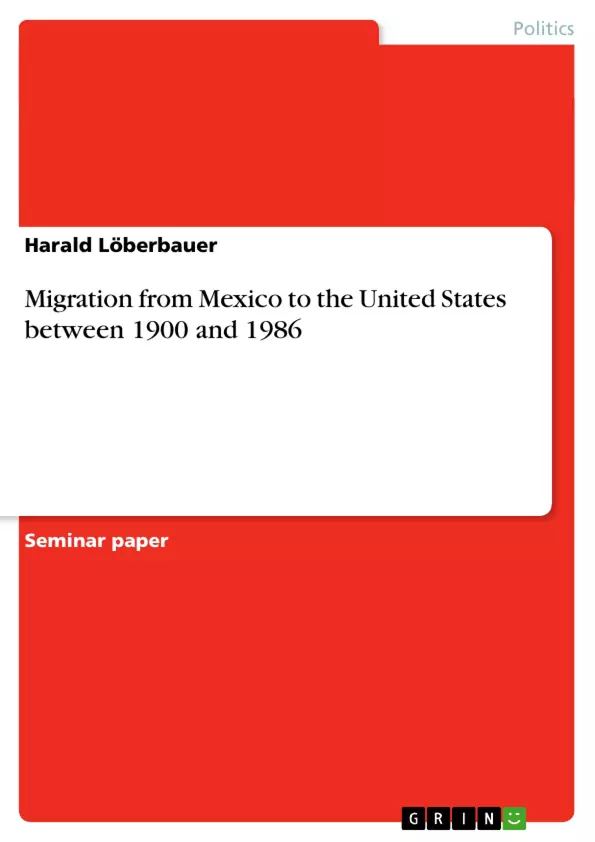This thesis should demonstrate in what dimension the mexican migration set in in the beginning of the 20th century. To show this it is necessary have a look on the immigration policies in the late 19th century. This chapter will be very short to pass into the mexican migration from 1900 to the beginning of the Second World War which marked the end of the so-called “temporary” mexican guestworker movement. Then we are going to have a look on the migration between 1942 and 1964 characterized by the bracero program and second the period after 1964 characterized by opening and liberalizing the United States immigration policy until 1986. In 1986 because a neo-restrictive tendency in immigration policy set in but this will not b part of this analysis.
Inhaltsverzeichnis (Table of Contents)
- Introducing
- United States Immigration Traditions
- Temporary Labor Force Migration from Mexico to the United States
- Labor-Force Importation and Deportation Policy (1942-1964)
- The Liberalisation of the Immigration Policy between 1964 and the beginning of the so-called neo-restrictive policy marked by IRCA 1986
Zielsetzung und Themenschwerpunkte (Objectives and Key Themes)
This thesis aims to demonstrate the extent and nature of Mexican migration to the United States in the early 20th century. It analyzes immigration policies in the late 19th century and traces the evolution of Mexican labor migration from 1900 to 1986, focusing on the temporary guest worker movement before World War II, the bracero program between 1942 and 1964, and the period of liberalized US immigration policy from 1964 to 1986.
- Historical development of Mexican migration to the United States
- US immigration policies and their impact on Mexican migration
- The role of temporary labor migration and the bracero program
- The evolution of US immigration policy towards Mexico
- The changing social and economic landscape of Mexican migration
Zusammenfassung der Kapitel (Chapter Summaries)
- Introducing: This chapter provides an overview of the thesis, outlining the key periods and themes to be explored. It emphasizes the temporary nature of early Mexican migration and the subsequent evolution of US immigration policy.
- United States Immigration Traditions: This chapter explores the historical evolution of US immigration policies, highlighting the transition from state-level regulation to federal involvement. It emphasizes the shift from a period of relatively open immigration to a more restrictive approach in the early 20th century.
- Temporary Labor Force Migration from Mexico to the United States: This chapter focuses on the emergence of Mexican labor migration during World War I, examining the motivations and conditions of these workers. It discusses the preference of Mexican workers for southwestern states due to their proximity to Mexico.
Schlüsselwörter (Keywords)
This thesis focuses on Mexican migration to the United States, US immigration policy, temporary labor migration, the bracero program, border control, and the historical evolution of migration patterns between Mexico and the United States. It examines the economic, social, and political factors influencing these movements, including labor demand, economic opportunities, and changing immigration regulations.
- Citar trabajo
- Harald Löberbauer (Autor), 2005, Migration from Mexico to the United States between 1900 and 1986, Múnich, GRIN Verlag, https://www.grin.com/document/35823



